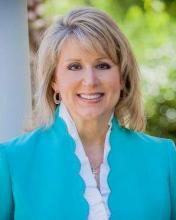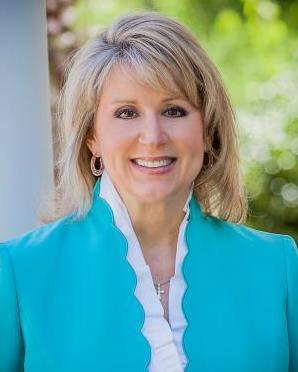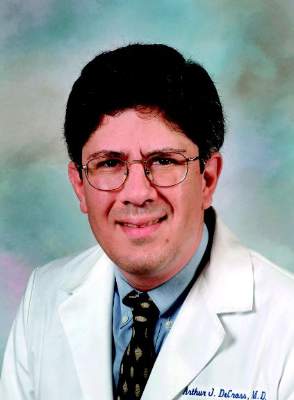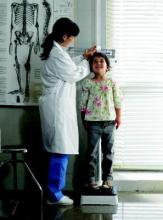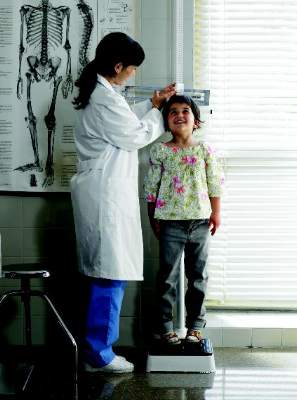User login
Legislation would ease burden of Stage 2 meaningful use
Legislation to ease the attestation burden physicians must meet under Stage 2 of meaningful use has been reintroduced in Congress.
The Flexibility in Health IT Reporting (H.R. 270), introduced by Rep. Renee Ellmers (R-N.C.) and Rep. Ron Kind (D-Wis.), would allow physicians to choose any 3-month quarter as their attestation period to qualify for incentive payments under Stage 2. Current law requires they report for a full year. In previous years and under Stage 1, the attestation period was 90 days. This year also marks the first year physicians and hospitals will be subject to a 1% reduction in Medicare payments for not meeting meaningful use requirements.
The legislation was introduced as the Centers for Medicare & Medicaid Services reported low participation in Stage 2. At a Jan. 13 meeting of the Health IT Policy Committee, an advisory committee to the Office of the National Coordinator for Health Information Technology, CMS officials reported that 16,455 eligible health care professionals had successfully attested to Stage 2 of meaningful use, while a total of 337,861 had registered for the Medicare meaningful use incentive program.
“The time constraints imposed on doctors and hospitals are inflexible and simply unmanageable – and this is evident by the dreadful Stage 2 meaningful use attestation numbers released by CMS,” Rep. Ellmers said in a statement.
The legislation is supported by several physician and health care organizations including the American Academy of Family Physicians, American Hospital Association, American Medical Association, Medical Group Management Association, College of Healthcare Information Management Executives, and Healthcare Information and Management Systems Society.
“Stage 2 of meaningful use has proven extremely challenging and, absent this reporting flexibility, a significant number of physicians will be unable to participate in the program and unfairly penalized,” Anders Gillberg, senior vice president of government affairs for the Medical Group Management Association, said in a statement.
The bill has been referred to both the Ways and Means and Energy and Commerce Committees.
Legislation to ease the attestation burden physicians must meet under Stage 2 of meaningful use has been reintroduced in Congress.
The Flexibility in Health IT Reporting (H.R. 270), introduced by Rep. Renee Ellmers (R-N.C.) and Rep. Ron Kind (D-Wis.), would allow physicians to choose any 3-month quarter as their attestation period to qualify for incentive payments under Stage 2. Current law requires they report for a full year. In previous years and under Stage 1, the attestation period was 90 days. This year also marks the first year physicians and hospitals will be subject to a 1% reduction in Medicare payments for not meeting meaningful use requirements.
The legislation was introduced as the Centers for Medicare & Medicaid Services reported low participation in Stage 2. At a Jan. 13 meeting of the Health IT Policy Committee, an advisory committee to the Office of the National Coordinator for Health Information Technology, CMS officials reported that 16,455 eligible health care professionals had successfully attested to Stage 2 of meaningful use, while a total of 337,861 had registered for the Medicare meaningful use incentive program.
“The time constraints imposed on doctors and hospitals are inflexible and simply unmanageable – and this is evident by the dreadful Stage 2 meaningful use attestation numbers released by CMS,” Rep. Ellmers said in a statement.
The legislation is supported by several physician and health care organizations including the American Academy of Family Physicians, American Hospital Association, American Medical Association, Medical Group Management Association, College of Healthcare Information Management Executives, and Healthcare Information and Management Systems Society.
“Stage 2 of meaningful use has proven extremely challenging and, absent this reporting flexibility, a significant number of physicians will be unable to participate in the program and unfairly penalized,” Anders Gillberg, senior vice president of government affairs for the Medical Group Management Association, said in a statement.
The bill has been referred to both the Ways and Means and Energy and Commerce Committees.
Legislation to ease the attestation burden physicians must meet under Stage 2 of meaningful use has been reintroduced in Congress.
The Flexibility in Health IT Reporting (H.R. 270), introduced by Rep. Renee Ellmers (R-N.C.) and Rep. Ron Kind (D-Wis.), would allow physicians to choose any 3-month quarter as their attestation period to qualify for incentive payments under Stage 2. Current law requires they report for a full year. In previous years and under Stage 1, the attestation period was 90 days. This year also marks the first year physicians and hospitals will be subject to a 1% reduction in Medicare payments for not meeting meaningful use requirements.
The legislation was introduced as the Centers for Medicare & Medicaid Services reported low participation in Stage 2. At a Jan. 13 meeting of the Health IT Policy Committee, an advisory committee to the Office of the National Coordinator for Health Information Technology, CMS officials reported that 16,455 eligible health care professionals had successfully attested to Stage 2 of meaningful use, while a total of 337,861 had registered for the Medicare meaningful use incentive program.
“The time constraints imposed on doctors and hospitals are inflexible and simply unmanageable – and this is evident by the dreadful Stage 2 meaningful use attestation numbers released by CMS,” Rep. Ellmers said in a statement.
The legislation is supported by several physician and health care organizations including the American Academy of Family Physicians, American Hospital Association, American Medical Association, Medical Group Management Association, College of Healthcare Information Management Executives, and Healthcare Information and Management Systems Society.
“Stage 2 of meaningful use has proven extremely challenging and, absent this reporting flexibility, a significant number of physicians will be unable to participate in the program and unfairly penalized,” Anders Gillberg, senior vice president of government affairs for the Medical Group Management Association, said in a statement.
The bill has been referred to both the Ways and Means and Energy and Commerce Committees.
ACP: EHRs need to focus on patient care, not reimbursement
Electronic health records need to focus less on lists of check boxes and reimbursement and more on narrative entries and designs that improve patient care, according to a new policy statement from the American College of Physicians.
Documenting clinical information via drop-down lists, check boxes, macros, and templates can be distracting and disruptive to vital clinical thinking and storytelling, wrote Thomson Kuhn of the ACP and his colleagues. The policy recommendations were published Jan. 13 in Annals of Internal Medicine.
The authors warned against “overstructuring the clinical record and overloading it with extraneous data” and further devaluing the importance of narrative entries (Ann. Intern. Med. 2015 Jan. 13 (doi:10.7326/M14-2128).
Complex and contradictory drivers are influencing the development of EHRs, so now seems a good time to reconsider what and how information is being documented, Dr. Peter Basch, medical director of ambulatory EHR and health IT policy at MedStar Health of Washington, D.C., and chair of the ACP Medical Informatics Committee, said in an interview.
On the one hand, the Office of the National Coordinator for Health Information Technology “calls for leveraging health IT to improve the consistency of documentation. At the same time and previous to that, the [HHS Office of Inspector General] has implied that seeing the same or very similar phrases in clinical documentation, whether in the same patient over a period of time or in different patients, could be evidence of note-cloning, and thus billing fraud,” said Dr. Basch, a coauthor of the policy statement.
The focus on reimbursement in the design of EHRs limits market creativity and makes it difficult to introduce solutions that simplify the clinical documentation process, he added.
“Regulations should be clear and should address clinical workflow without adding burden for documentation solely for the purpose of obtaining reimbursement,” the ACP policy statement notes.
The ACP is calling on health care delivery organizations, medical societies, and others to define standards for clinical documentation, something that will allow the sharing of data. “No one format is appropriate for all specialties or clinical situations, but each organization or practice should develop ‘chart etiquette’ principles and policies based on a well-defined set of standards.”
And one area where ACP would like to see standardization specifically highlighted is in common forms such as prior authorizations so that they would “no longer be unique in their data content format requirements.”
ACP also called for research in a number of areas, including identifying best practices, developing automation tools that enhance document quality without facilitating improper behavior, improving medical education around health information technology, and finding effective ways to disseminate professional standards of clinical documentation and best practices.
To get the most of out electronic health records, their design needs to be focused on the entirety of the patient experience, Dr. Thomas Sequist said.
The true power of EHRs may be in moving from documenting isolated clinical transactions to describing whole-patient care from multiple stakeholder viewpoints. Ideally, this process will shift providers from perceiving electronic clinical documentation as a distraction from high-quality patient care to seeing it as a core component of such care.
EHR developers should work with customers to build products that document integrated care episodes in a manner that supports and does not impede the clinical cognitive process as well as the patient experience.
Dr. Thomas Sequist is chief quality and safety officer at Partners HealthCare and professor at Harvard Medical School, Boston. He made his comments in an editorial that accompanied the policy statement (Ann. Intern. Med. 2015 Jan. 13 (doi:10.7326/M14-2913).
To get the most of out electronic health records, their design needs to be focused on the entirety of the patient experience, Dr. Thomas Sequist said.
The true power of EHRs may be in moving from documenting isolated clinical transactions to describing whole-patient care from multiple stakeholder viewpoints. Ideally, this process will shift providers from perceiving electronic clinical documentation as a distraction from high-quality patient care to seeing it as a core component of such care.
EHR developers should work with customers to build products that document integrated care episodes in a manner that supports and does not impede the clinical cognitive process as well as the patient experience.
Dr. Thomas Sequist is chief quality and safety officer at Partners HealthCare and professor at Harvard Medical School, Boston. He made his comments in an editorial that accompanied the policy statement (Ann. Intern. Med. 2015 Jan. 13 (doi:10.7326/M14-2913).
To get the most of out electronic health records, their design needs to be focused on the entirety of the patient experience, Dr. Thomas Sequist said.
The true power of EHRs may be in moving from documenting isolated clinical transactions to describing whole-patient care from multiple stakeholder viewpoints. Ideally, this process will shift providers from perceiving electronic clinical documentation as a distraction from high-quality patient care to seeing it as a core component of such care.
EHR developers should work with customers to build products that document integrated care episodes in a manner that supports and does not impede the clinical cognitive process as well as the patient experience.
Dr. Thomas Sequist is chief quality and safety officer at Partners HealthCare and professor at Harvard Medical School, Boston. He made his comments in an editorial that accompanied the policy statement (Ann. Intern. Med. 2015 Jan. 13 (doi:10.7326/M14-2913).
Electronic health records need to focus less on lists of check boxes and reimbursement and more on narrative entries and designs that improve patient care, according to a new policy statement from the American College of Physicians.
Documenting clinical information via drop-down lists, check boxes, macros, and templates can be distracting and disruptive to vital clinical thinking and storytelling, wrote Thomson Kuhn of the ACP and his colleagues. The policy recommendations were published Jan. 13 in Annals of Internal Medicine.
The authors warned against “overstructuring the clinical record and overloading it with extraneous data” and further devaluing the importance of narrative entries (Ann. Intern. Med. 2015 Jan. 13 (doi:10.7326/M14-2128).
Complex and contradictory drivers are influencing the development of EHRs, so now seems a good time to reconsider what and how information is being documented, Dr. Peter Basch, medical director of ambulatory EHR and health IT policy at MedStar Health of Washington, D.C., and chair of the ACP Medical Informatics Committee, said in an interview.
On the one hand, the Office of the National Coordinator for Health Information Technology “calls for leveraging health IT to improve the consistency of documentation. At the same time and previous to that, the [HHS Office of Inspector General] has implied that seeing the same or very similar phrases in clinical documentation, whether in the same patient over a period of time or in different patients, could be evidence of note-cloning, and thus billing fraud,” said Dr. Basch, a coauthor of the policy statement.
The focus on reimbursement in the design of EHRs limits market creativity and makes it difficult to introduce solutions that simplify the clinical documentation process, he added.
“Regulations should be clear and should address clinical workflow without adding burden for documentation solely for the purpose of obtaining reimbursement,” the ACP policy statement notes.
The ACP is calling on health care delivery organizations, medical societies, and others to define standards for clinical documentation, something that will allow the sharing of data. “No one format is appropriate for all specialties or clinical situations, but each organization or practice should develop ‘chart etiquette’ principles and policies based on a well-defined set of standards.”
And one area where ACP would like to see standardization specifically highlighted is in common forms such as prior authorizations so that they would “no longer be unique in their data content format requirements.”
ACP also called for research in a number of areas, including identifying best practices, developing automation tools that enhance document quality without facilitating improper behavior, improving medical education around health information technology, and finding effective ways to disseminate professional standards of clinical documentation and best practices.
Electronic health records need to focus less on lists of check boxes and reimbursement and more on narrative entries and designs that improve patient care, according to a new policy statement from the American College of Physicians.
Documenting clinical information via drop-down lists, check boxes, macros, and templates can be distracting and disruptive to vital clinical thinking and storytelling, wrote Thomson Kuhn of the ACP and his colleagues. The policy recommendations were published Jan. 13 in Annals of Internal Medicine.
The authors warned against “overstructuring the clinical record and overloading it with extraneous data” and further devaluing the importance of narrative entries (Ann. Intern. Med. 2015 Jan. 13 (doi:10.7326/M14-2128).
Complex and contradictory drivers are influencing the development of EHRs, so now seems a good time to reconsider what and how information is being documented, Dr. Peter Basch, medical director of ambulatory EHR and health IT policy at MedStar Health of Washington, D.C., and chair of the ACP Medical Informatics Committee, said in an interview.
On the one hand, the Office of the National Coordinator for Health Information Technology “calls for leveraging health IT to improve the consistency of documentation. At the same time and previous to that, the [HHS Office of Inspector General] has implied that seeing the same or very similar phrases in clinical documentation, whether in the same patient over a period of time or in different patients, could be evidence of note-cloning, and thus billing fraud,” said Dr. Basch, a coauthor of the policy statement.
The focus on reimbursement in the design of EHRs limits market creativity and makes it difficult to introduce solutions that simplify the clinical documentation process, he added.
“Regulations should be clear and should address clinical workflow without adding burden for documentation solely for the purpose of obtaining reimbursement,” the ACP policy statement notes.
The ACP is calling on health care delivery organizations, medical societies, and others to define standards for clinical documentation, something that will allow the sharing of data. “No one format is appropriate for all specialties or clinical situations, but each organization or practice should develop ‘chart etiquette’ principles and policies based on a well-defined set of standards.”
And one area where ACP would like to see standardization specifically highlighted is in common forms such as prior authorizations so that they would “no longer be unique in their data content format requirements.”
ACP also called for research in a number of areas, including identifying best practices, developing automation tools that enhance document quality without facilitating improper behavior, improving medical education around health information technology, and finding effective ways to disseminate professional standards of clinical documentation and best practices.
FROM ANNALS OF INTERNAL MEDICINE
AMA updates maintenance of certification policy
The American Medical Association’s updated policy on maintenance of certification is generating discussion, particularly as it relates to MOC’s role in licensure and credentialing.
According to the new policy, recently approved by delegates during the 2014 AMA Interim Meeting in Dallas, “the MOC program should not be a mandated requirement for licensure, credentialing, payment, network participation, or employment.” The American Gastroenterological Association agrees with AMA’s position.
Dr. Arthur J. DeCross, AGAF, chair of the AGA Institute’s MOC Subcommittee and associate professor of medicine at the University of Rochester (N.Y.) Medical Center, said in an interview. “Maintenance of certification is really about life-long continuing medical education. It is really a way of saying it is not enough to pass a test, a board exam, when you graduate medical training and be grandfathered into several decades of clinical practice without ever having your certification updated or without demonstrating ... that you are current and competent in medical practice.”
AMA said in a statement to this news organization that the recent change in policy was “introduced in relation to an increase in the frequency of requirements for one or more [American Board of Medical Specialties member boards’] programs and concerns about the relevance of selected MOC activities to physician clinical practice.”
The AGA will continue to work productively with the American Board of Internal Medicine to ensure that the process is relevant to the needs of our members and is not unduly burdensome or costly. The AGA governing board is convening a task force to study these issues and identify the ideal pathway to recertification and assessment of physician competency.
Other MOC policy updates call for a process based on evidence and designed to identify performance gaps and unmet needs, providing direction and guidance for improvement in physician performance and delivery of care; that is examined periodically to evaluate physician satisfaction, knowledge uptake, and intent to maintain or change practice; and that is a tool for continued improvement.
AMA also is calling for practicing physicians to be well represented on specialty boards developing MOC programs, and those programs should include activities and measurements that are relevant to clinical practice and not be cost prohibitive or present barriers to patient care.
Delegates also voted to encourage specialty boards to investigate alternative approaches to MOC and directed the organization to report annually on the MOC process.
Specialty boards, “should have no financial interest in the [MOC] process,” according to an AMA document on the resolutions from the meeting.
The American Medical Association’s updated policy on maintenance of certification is generating discussion, particularly as it relates to MOC’s role in licensure and credentialing.
According to the new policy, recently approved by delegates during the 2014 AMA Interim Meeting in Dallas, “the MOC program should not be a mandated requirement for licensure, credentialing, payment, network participation, or employment.” The American Gastroenterological Association agrees with AMA’s position.
Dr. Arthur J. DeCross, AGAF, chair of the AGA Institute’s MOC Subcommittee and associate professor of medicine at the University of Rochester (N.Y.) Medical Center, said in an interview. “Maintenance of certification is really about life-long continuing medical education. It is really a way of saying it is not enough to pass a test, a board exam, when you graduate medical training and be grandfathered into several decades of clinical practice without ever having your certification updated or without demonstrating ... that you are current and competent in medical practice.”
AMA said in a statement to this news organization that the recent change in policy was “introduced in relation to an increase in the frequency of requirements for one or more [American Board of Medical Specialties member boards’] programs and concerns about the relevance of selected MOC activities to physician clinical practice.”
The AGA will continue to work productively with the American Board of Internal Medicine to ensure that the process is relevant to the needs of our members and is not unduly burdensome or costly. The AGA governing board is convening a task force to study these issues and identify the ideal pathway to recertification and assessment of physician competency.
Other MOC policy updates call for a process based on evidence and designed to identify performance gaps and unmet needs, providing direction and guidance for improvement in physician performance and delivery of care; that is examined periodically to evaluate physician satisfaction, knowledge uptake, and intent to maintain or change practice; and that is a tool for continued improvement.
AMA also is calling for practicing physicians to be well represented on specialty boards developing MOC programs, and those programs should include activities and measurements that are relevant to clinical practice and not be cost prohibitive or present barriers to patient care.
Delegates also voted to encourage specialty boards to investigate alternative approaches to MOC and directed the organization to report annually on the MOC process.
Specialty boards, “should have no financial interest in the [MOC] process,” according to an AMA document on the resolutions from the meeting.
The American Medical Association’s updated policy on maintenance of certification is generating discussion, particularly as it relates to MOC’s role in licensure and credentialing.
According to the new policy, recently approved by delegates during the 2014 AMA Interim Meeting in Dallas, “the MOC program should not be a mandated requirement for licensure, credentialing, payment, network participation, or employment.” The American Gastroenterological Association agrees with AMA’s position.
Dr. Arthur J. DeCross, AGAF, chair of the AGA Institute’s MOC Subcommittee and associate professor of medicine at the University of Rochester (N.Y.) Medical Center, said in an interview. “Maintenance of certification is really about life-long continuing medical education. It is really a way of saying it is not enough to pass a test, a board exam, when you graduate medical training and be grandfathered into several decades of clinical practice without ever having your certification updated or without demonstrating ... that you are current and competent in medical practice.”
AMA said in a statement to this news organization that the recent change in policy was “introduced in relation to an increase in the frequency of requirements for one or more [American Board of Medical Specialties member boards’] programs and concerns about the relevance of selected MOC activities to physician clinical practice.”
The AGA will continue to work productively with the American Board of Internal Medicine to ensure that the process is relevant to the needs of our members and is not unduly burdensome or costly. The AGA governing board is convening a task force to study these issues and identify the ideal pathway to recertification and assessment of physician competency.
Other MOC policy updates call for a process based on evidence and designed to identify performance gaps and unmet needs, providing direction and guidance for improvement in physician performance and delivery of care; that is examined periodically to evaluate physician satisfaction, knowledge uptake, and intent to maintain or change practice; and that is a tool for continued improvement.
AMA also is calling for practicing physicians to be well represented on specialty boards developing MOC programs, and those programs should include activities and measurements that are relevant to clinical practice and not be cost prohibitive or present barriers to patient care.
Delegates also voted to encourage specialty boards to investigate alternative approaches to MOC and directed the organization to report annually on the MOC process.
Specialty boards, “should have no financial interest in the [MOC] process,” according to an AMA document on the resolutions from the meeting.
CMS will hold 2015 Medicare payments for 2 weeks
Doctors may have to wait a few extra days to get paid for Medicare services they administer, the Centers for Medicare and Medicaid Services announced.
Claims submitted during the first 14 days of 2015 and dated within that time period will be held to allow for the corrections of errors in the 2015 physician fee schedule. Claims submitted during that time but dated in 2014 will be processed normally. Contractors are expected to process the early 2015 claims beginning Jan. 15.
CMS expects minimal impact to physicians, as it is not required to pay clean electronic claims sooner than 14 days under law.
“I think this will have minimum impact,” American Academy of Family Physicians President Robert Wergin said in an interview. “It does affect your cash flow, but it has happened in the past, particularly around the time with SGR patches.”
Medicare tends to be among the faster payers in general, and the 14-day delay should not create any significant hardship as physicians should be prepared for this, Dr. Wergin added.
Doctors may have to wait a few extra days to get paid for Medicare services they administer, the Centers for Medicare and Medicaid Services announced.
Claims submitted during the first 14 days of 2015 and dated within that time period will be held to allow for the corrections of errors in the 2015 physician fee schedule. Claims submitted during that time but dated in 2014 will be processed normally. Contractors are expected to process the early 2015 claims beginning Jan. 15.
CMS expects minimal impact to physicians, as it is not required to pay clean electronic claims sooner than 14 days under law.
“I think this will have minimum impact,” American Academy of Family Physicians President Robert Wergin said in an interview. “It does affect your cash flow, but it has happened in the past, particularly around the time with SGR patches.”
Medicare tends to be among the faster payers in general, and the 14-day delay should not create any significant hardship as physicians should be prepared for this, Dr. Wergin added.
Doctors may have to wait a few extra days to get paid for Medicare services they administer, the Centers for Medicare and Medicaid Services announced.
Claims submitted during the first 14 days of 2015 and dated within that time period will be held to allow for the corrections of errors in the 2015 physician fee schedule. Claims submitted during that time but dated in 2014 will be processed normally. Contractors are expected to process the early 2015 claims beginning Jan. 15.
CMS expects minimal impact to physicians, as it is not required to pay clean electronic claims sooner than 14 days under law.
“I think this will have minimum impact,” American Academy of Family Physicians President Robert Wergin said in an interview. “It does affect your cash flow, but it has happened in the past, particularly around the time with SGR patches.”
Medicare tends to be among the faster payers in general, and the 14-day delay should not create any significant hardship as physicians should be prepared for this, Dr. Wergin added.
ASCO, AACR recommend against using e-cigarettes as first line for smoking cessation for cancer patients
Given the lack of evidence to support the use of e-cigarettes as a smoking cessation product, the American Society of Clinical Oncology and the American Association of Cancer Research are urging oncologists not to recommend e-cigarettes to cancer patients.
“Given the overall lack of evidence supporting the use of ENDS (electronic nicotine delivery systems) as a proven cessation aid for smokers in general, and the absence of any data on the potential adverse effects of inhaling ENDS aerosol by cancer patients undergoing treatment, oncologists would be wise to refrain from recommending ENDS as a first-line therapy for smoking cessation,” the two organizations said in a joint policy statement published Jan. 8 in the Clinical Cancer Research (Clin. Canc. Res. 2015 Jan. 8 [doi:10.1158/1078-0432.CCR-14-2544]).
To that end, ASCO and AACR laid out a number of research priorities to help better understand the role ENDS play in smoking cessation as well as to understand the overall health impact they have and to inform health policy. The organizations are looking for information that examines key design features of ENDS; product testing standards; the effects of acute and chronic ENDS product use, including second- and third-hand exposure; health benefits of transitioning from traditional tobacco products to ENDS; abuse potential; and research on understanding how products are used in general and their potential to be a smoking cessation product.
The policy statement also reiterated recommendations previously made to the Food and Drug Administration on how to regulate ENDS.
“Rapid elimination of combustible tobacco products would dramatically reduce the burden of tobacco-related death and disease,” Thomas Brandon, Ph. D., Moffitt Cancer Center of Tampa, and his colleagues write. “The AACR and ASCO support every effort to reduce the use of combustible tobacco, and we support careful consideration of ENDS as potentially harmful, and potentially beneficial, products in this regard.”
Given the lack of evidence to support the use of e-cigarettes as a smoking cessation product, the American Society of Clinical Oncology and the American Association of Cancer Research are urging oncologists not to recommend e-cigarettes to cancer patients.
“Given the overall lack of evidence supporting the use of ENDS (electronic nicotine delivery systems) as a proven cessation aid for smokers in general, and the absence of any data on the potential adverse effects of inhaling ENDS aerosol by cancer patients undergoing treatment, oncologists would be wise to refrain from recommending ENDS as a first-line therapy for smoking cessation,” the two organizations said in a joint policy statement published Jan. 8 in the Clinical Cancer Research (Clin. Canc. Res. 2015 Jan. 8 [doi:10.1158/1078-0432.CCR-14-2544]).
To that end, ASCO and AACR laid out a number of research priorities to help better understand the role ENDS play in smoking cessation as well as to understand the overall health impact they have and to inform health policy. The organizations are looking for information that examines key design features of ENDS; product testing standards; the effects of acute and chronic ENDS product use, including second- and third-hand exposure; health benefits of transitioning from traditional tobacco products to ENDS; abuse potential; and research on understanding how products are used in general and their potential to be a smoking cessation product.
The policy statement also reiterated recommendations previously made to the Food and Drug Administration on how to regulate ENDS.
“Rapid elimination of combustible tobacco products would dramatically reduce the burden of tobacco-related death and disease,” Thomas Brandon, Ph. D., Moffitt Cancer Center of Tampa, and his colleagues write. “The AACR and ASCO support every effort to reduce the use of combustible tobacco, and we support careful consideration of ENDS as potentially harmful, and potentially beneficial, products in this regard.”
Given the lack of evidence to support the use of e-cigarettes as a smoking cessation product, the American Society of Clinical Oncology and the American Association of Cancer Research are urging oncologists not to recommend e-cigarettes to cancer patients.
“Given the overall lack of evidence supporting the use of ENDS (electronic nicotine delivery systems) as a proven cessation aid for smokers in general, and the absence of any data on the potential adverse effects of inhaling ENDS aerosol by cancer patients undergoing treatment, oncologists would be wise to refrain from recommending ENDS as a first-line therapy for smoking cessation,” the two organizations said in a joint policy statement published Jan. 8 in the Clinical Cancer Research (Clin. Canc. Res. 2015 Jan. 8 [doi:10.1158/1078-0432.CCR-14-2544]).
To that end, ASCO and AACR laid out a number of research priorities to help better understand the role ENDS play in smoking cessation as well as to understand the overall health impact they have and to inform health policy. The organizations are looking for information that examines key design features of ENDS; product testing standards; the effects of acute and chronic ENDS product use, including second- and third-hand exposure; health benefits of transitioning from traditional tobacco products to ENDS; abuse potential; and research on understanding how products are used in general and their potential to be a smoking cessation product.
The policy statement also reiterated recommendations previously made to the Food and Drug Administration on how to regulate ENDS.
“Rapid elimination of combustible tobacco products would dramatically reduce the burden of tobacco-related death and disease,” Thomas Brandon, Ph. D., Moffitt Cancer Center of Tampa, and his colleagues write. “The AACR and ASCO support every effort to reduce the use of combustible tobacco, and we support careful consideration of ENDS as potentially harmful, and potentially beneficial, products in this regard.”
FROM CLINICAL CANCER RESEARCH
Pediatric essential health benefits remain undefined for ACA plans
The federal government missed an opportunity when it did not define pediatric essential health benefits for plans offered in the health insurance marketplace under the Affordable Care Act, Dr. Aimee Grace and her colleagues wrote in a study.
Dr. Grace of Children’s National Health System in Washington, and her colleagues urged the U.S. Health & Human Services department to revisit essential health benefits regulations and make some changes (Health Affairs 2014;33:2136-43) .
“HHS could revise the standard to bar pediatric limits and exclusions, particularly exclusions based on mental retardation, mental disability, or other developmental conditions; incorporate the concept of medical necessity into a defined pediatric benefit; address both covered services and actuarial value; and permit CHIP plans to be used as a benchmark for pediatric services,” Dr. Grace recommended.
The researchers examined each state’s essential health benefits benchmark plan and found a lack of consistent coverage, the result of HHS declining to implement a national standard for pediatric essential health benefits.
They found that is no state benchmark plan summary “included a specific benefit category classified as pediatric services, despite the fact that those services constitute a specific category of essential health benefits. ... As in the HHS regulations, the only pediatric categories expressly mentioned in the summaries were oral and vision care.”
Dr. Grace and colleagues found specific pediatric exclusions within certain treatment categories, typically associated with pediatric developmental and mental health conditions.
“For example, thirteen states specifically excluded services for children with learning disabilities, and ten states excluded speech therapy for developmental delays, stuttering, or both,” researchers note.
The study was supported by the DC-Baltimore Research Center on Child Health
Disparities (Grant No. P20 MD000198 from the National Institute on Minority Health and Health Disparities).
The federal government missed an opportunity when it did not define pediatric essential health benefits for plans offered in the health insurance marketplace under the Affordable Care Act, Dr. Aimee Grace and her colleagues wrote in a study.
Dr. Grace of Children’s National Health System in Washington, and her colleagues urged the U.S. Health & Human Services department to revisit essential health benefits regulations and make some changes (Health Affairs 2014;33:2136-43) .
“HHS could revise the standard to bar pediatric limits and exclusions, particularly exclusions based on mental retardation, mental disability, or other developmental conditions; incorporate the concept of medical necessity into a defined pediatric benefit; address both covered services and actuarial value; and permit CHIP plans to be used as a benchmark for pediatric services,” Dr. Grace recommended.
The researchers examined each state’s essential health benefits benchmark plan and found a lack of consistent coverage, the result of HHS declining to implement a national standard for pediatric essential health benefits.
They found that is no state benchmark plan summary “included a specific benefit category classified as pediatric services, despite the fact that those services constitute a specific category of essential health benefits. ... As in the HHS regulations, the only pediatric categories expressly mentioned in the summaries were oral and vision care.”
Dr. Grace and colleagues found specific pediatric exclusions within certain treatment categories, typically associated with pediatric developmental and mental health conditions.
“For example, thirteen states specifically excluded services for children with learning disabilities, and ten states excluded speech therapy for developmental delays, stuttering, or both,” researchers note.
The study was supported by the DC-Baltimore Research Center on Child Health
Disparities (Grant No. P20 MD000198 from the National Institute on Minority Health and Health Disparities).
The federal government missed an opportunity when it did not define pediatric essential health benefits for plans offered in the health insurance marketplace under the Affordable Care Act, Dr. Aimee Grace and her colleagues wrote in a study.
Dr. Grace of Children’s National Health System in Washington, and her colleagues urged the U.S. Health & Human Services department to revisit essential health benefits regulations and make some changes (Health Affairs 2014;33:2136-43) .
“HHS could revise the standard to bar pediatric limits and exclusions, particularly exclusions based on mental retardation, mental disability, or other developmental conditions; incorporate the concept of medical necessity into a defined pediatric benefit; address both covered services and actuarial value; and permit CHIP plans to be used as a benchmark for pediatric services,” Dr. Grace recommended.
The researchers examined each state’s essential health benefits benchmark plan and found a lack of consistent coverage, the result of HHS declining to implement a national standard for pediatric essential health benefits.
They found that is no state benchmark plan summary “included a specific benefit category classified as pediatric services, despite the fact that those services constitute a specific category of essential health benefits. ... As in the HHS regulations, the only pediatric categories expressly mentioned in the summaries were oral and vision care.”
Dr. Grace and colleagues found specific pediatric exclusions within certain treatment categories, typically associated with pediatric developmental and mental health conditions.
“For example, thirteen states specifically excluded services for children with learning disabilities, and ten states excluded speech therapy for developmental delays, stuttering, or both,” researchers note.
The study was supported by the DC-Baltimore Research Center on Child Health
Disparities (Grant No. P20 MD000198 from the National Institute on Minority Health and Health Disparities).
FROM HEALTH AFFAIRS
Giving patients ownership of data key to solving health IT woes
Mandating that patients “own” their health care data could open the road to true interoperability of electronic health records and might even help solve other tough health IT problems.
“As a consumer, if I pay for my health care, I go see a provider, and I [should] get my data, whatever it is – doctor’s note, lab test, CT or an MRI, Dr. Samson Jesudass, senior vice president and clinical leader at Ascension Health, said at a panel discussion at the Washington, D.C.,–based Bipartisan Policy Center. “That provider should be able to give that to me at the end of that visit, or whenever at whatever time, in a format that I can probably take and put it anywhere else into any other system.”
Making data portable and, more importantly, giving ownership of it to patients, “might be able to solve the issues” that are affecting the health IT environment, he said. “At the end of the day, if a patient is able to take his or her own data and be able to use it in whatever form or fashion, you actually democratize the whole process of information.”
During the discussion, ownership of data was often cited as a barrier to advancing health IT, particularly with physicians protecting their own data in an effort to protect their practices. But participants noted that language included in the year-end federal continuing resolution and budget bill provides a good opportunity to discuss some of these issues, specifically wording that urges the Office of the National Coordinator for Health Information Technology to exercise its authority to decertify EHR systems from the meaningful use program that block the transfer of data.
“This is a prime opportunity to get the physician’s, health care provider’s, [and] health care facility’s input on what’s going to make this an easier change,” especially for those that have invested in systems that are no longer certified to allow for meaningful use incentive payments, Dr. Rhonda Medows, chief medical officer at Optum, the research arm of UnitedHealth.
Vendors should “listen and serve” more, according to Jon Zimmerman, vice president and general manager of clinical business solutions at GE Healthcare. “We have to engage the clinicians and the business people in the health care delivery systems differently. We have to ask them, not tell them. We have to observe them. We have to assist them. And we really have to dig a little deeper to understand what it is they need to do.”
Mandating that patients “own” their health care data could open the road to true interoperability of electronic health records and might even help solve other tough health IT problems.
“As a consumer, if I pay for my health care, I go see a provider, and I [should] get my data, whatever it is – doctor’s note, lab test, CT or an MRI, Dr. Samson Jesudass, senior vice president and clinical leader at Ascension Health, said at a panel discussion at the Washington, D.C.,–based Bipartisan Policy Center. “That provider should be able to give that to me at the end of that visit, or whenever at whatever time, in a format that I can probably take and put it anywhere else into any other system.”
Making data portable and, more importantly, giving ownership of it to patients, “might be able to solve the issues” that are affecting the health IT environment, he said. “At the end of the day, if a patient is able to take his or her own data and be able to use it in whatever form or fashion, you actually democratize the whole process of information.”
During the discussion, ownership of data was often cited as a barrier to advancing health IT, particularly with physicians protecting their own data in an effort to protect their practices. But participants noted that language included in the year-end federal continuing resolution and budget bill provides a good opportunity to discuss some of these issues, specifically wording that urges the Office of the National Coordinator for Health Information Technology to exercise its authority to decertify EHR systems from the meaningful use program that block the transfer of data.
“This is a prime opportunity to get the physician’s, health care provider’s, [and] health care facility’s input on what’s going to make this an easier change,” especially for those that have invested in systems that are no longer certified to allow for meaningful use incentive payments, Dr. Rhonda Medows, chief medical officer at Optum, the research arm of UnitedHealth.
Vendors should “listen and serve” more, according to Jon Zimmerman, vice president and general manager of clinical business solutions at GE Healthcare. “We have to engage the clinicians and the business people in the health care delivery systems differently. We have to ask them, not tell them. We have to observe them. We have to assist them. And we really have to dig a little deeper to understand what it is they need to do.”
Mandating that patients “own” their health care data could open the road to true interoperability of electronic health records and might even help solve other tough health IT problems.
“As a consumer, if I pay for my health care, I go see a provider, and I [should] get my data, whatever it is – doctor’s note, lab test, CT or an MRI, Dr. Samson Jesudass, senior vice president and clinical leader at Ascension Health, said at a panel discussion at the Washington, D.C.,–based Bipartisan Policy Center. “That provider should be able to give that to me at the end of that visit, or whenever at whatever time, in a format that I can probably take and put it anywhere else into any other system.”
Making data portable and, more importantly, giving ownership of it to patients, “might be able to solve the issues” that are affecting the health IT environment, he said. “At the end of the day, if a patient is able to take his or her own data and be able to use it in whatever form or fashion, you actually democratize the whole process of information.”
During the discussion, ownership of data was often cited as a barrier to advancing health IT, particularly with physicians protecting their own data in an effort to protect their practices. But participants noted that language included in the year-end federal continuing resolution and budget bill provides a good opportunity to discuss some of these issues, specifically wording that urges the Office of the National Coordinator for Health Information Technology to exercise its authority to decertify EHR systems from the meaningful use program that block the transfer of data.
“This is a prime opportunity to get the physician’s, health care provider’s, [and] health care facility’s input on what’s going to make this an easier change,” especially for those that have invested in systems that are no longer certified to allow for meaningful use incentive payments, Dr. Rhonda Medows, chief medical officer at Optum, the research arm of UnitedHealth.
Vendors should “listen and serve” more, according to Jon Zimmerman, vice president and general manager of clinical business solutions at GE Healthcare. “We have to engage the clinicians and the business people in the health care delivery systems differently. We have to ask them, not tell them. We have to observe them. We have to assist them. And we really have to dig a little deeper to understand what it is they need to do.”
As pediatric EHR use rises, accessing meaningful use incentives remains a challenge
Pediatricians are adopting electronic health records, but getting access to financial incentives from the meaningful use incentive program remains a challenge.
“Currently, pediatricians seeking [meaningful use] payments for using EHRs … must exceed a threshold of 20% of encounters with Medicaid-insured children,” wrote Dorothy Miller, an attorney at the PolicyLab at Children’s Hospital of Philadelphia and the University of Pennsylvania and her colleagues.
“In contrast, providers who treat adults can opt to participate through either the Medicare EHR incentive program, which has no patient threshold, or the Medicaid incentive program, which has a 30% threshold,” they said in a perspective column (Pediatrics 2014 Dec. 29 [doi:10.1542/peds.2014-2438]).
Ms. Miller and her colleagues noted that the 20% threshold can be difficult to achieve. Payments from Medicaid are low and ofter come slowly, leading few pediatricians to accept Medicaid payments. Also, in states where the Children’s Health Insurance Program operates independent of a state Medicaid program, encounters with those patients do not count toward the meaningful use threshold. Reporting requirements for Medicaid also present challenges, as there are “56 different systems through which pediatricians report their meaningful use participation to their respective state or territory, a much less consistent approach than the single, central federal repository under Medicare,” they added.
Despite the challenges, pediatric use of electronic health records is on the rise. In 2012, 79% of pediatricians used an EHR, up from 58% in 2009.
The data from 2012 are based on a survey of 1,621 nonretired, randomly selected U.S.-based members of the American Academy of Pediatrics, which also conducted the survey. The AAP conducted a similar survey in 2009. Each member received a self-administered questionnaire between July and December 2012 (Pediatrics [doi:10.1542/peds.2014-1115]).
Approximately half of all pediatricians (53%) said their main practice EHRs met the functional criteria for Stage 1 of meaningful use, though only 45% said their main practice applied for meaningful use incentives, Dr. Christoph Lehmann of the Vanderbilt University department of pediatrics and biomedical informatics, Nashville, Tenn., and colleagues reported.
“One-fifth of the 53% reporting to meet meaningful use Stage 1 in 2012 do not intend to apply for meaningful use incentives in later stages,” they noted. “Because meaningful use is ‘front-loaded’ with the largest incentives in the first year, pediatricians may be electing not to implement later meaningful use criteria, thus hampering the intended goal of increased adoption of functional EHRs.”
Although 79% reported using an EHR, only 31% reported using an EHR with basic functionality and 14% with full functionality. Eight percent reported using an EHR with optimal functionality including pediatric features, a statistic Dr. Lehmann and colleagues described as “disappointingly low.”
Half of the pediatricians surveyed agreed that EHRs are “necessary to provide quality patient care,” while 32% disagreed with that statement.
Pediatricians are adopting electronic health records, but getting access to financial incentives from the meaningful use incentive program remains a challenge.
“Currently, pediatricians seeking [meaningful use] payments for using EHRs … must exceed a threshold of 20% of encounters with Medicaid-insured children,” wrote Dorothy Miller, an attorney at the PolicyLab at Children’s Hospital of Philadelphia and the University of Pennsylvania and her colleagues.
“In contrast, providers who treat adults can opt to participate through either the Medicare EHR incentive program, which has no patient threshold, or the Medicaid incentive program, which has a 30% threshold,” they said in a perspective column (Pediatrics 2014 Dec. 29 [doi:10.1542/peds.2014-2438]).
Ms. Miller and her colleagues noted that the 20% threshold can be difficult to achieve. Payments from Medicaid are low and ofter come slowly, leading few pediatricians to accept Medicaid payments. Also, in states where the Children’s Health Insurance Program operates independent of a state Medicaid program, encounters with those patients do not count toward the meaningful use threshold. Reporting requirements for Medicaid also present challenges, as there are “56 different systems through which pediatricians report their meaningful use participation to their respective state or territory, a much less consistent approach than the single, central federal repository under Medicare,” they added.
Despite the challenges, pediatric use of electronic health records is on the rise. In 2012, 79% of pediatricians used an EHR, up from 58% in 2009.
The data from 2012 are based on a survey of 1,621 nonretired, randomly selected U.S.-based members of the American Academy of Pediatrics, which also conducted the survey. The AAP conducted a similar survey in 2009. Each member received a self-administered questionnaire between July and December 2012 (Pediatrics [doi:10.1542/peds.2014-1115]).
Approximately half of all pediatricians (53%) said their main practice EHRs met the functional criteria for Stage 1 of meaningful use, though only 45% said their main practice applied for meaningful use incentives, Dr. Christoph Lehmann of the Vanderbilt University department of pediatrics and biomedical informatics, Nashville, Tenn., and colleagues reported.
“One-fifth of the 53% reporting to meet meaningful use Stage 1 in 2012 do not intend to apply for meaningful use incentives in later stages,” they noted. “Because meaningful use is ‘front-loaded’ with the largest incentives in the first year, pediatricians may be electing not to implement later meaningful use criteria, thus hampering the intended goal of increased adoption of functional EHRs.”
Although 79% reported using an EHR, only 31% reported using an EHR with basic functionality and 14% with full functionality. Eight percent reported using an EHR with optimal functionality including pediatric features, a statistic Dr. Lehmann and colleagues described as “disappointingly low.”
Half of the pediatricians surveyed agreed that EHRs are “necessary to provide quality patient care,” while 32% disagreed with that statement.
Pediatricians are adopting electronic health records, but getting access to financial incentives from the meaningful use incentive program remains a challenge.
“Currently, pediatricians seeking [meaningful use] payments for using EHRs … must exceed a threshold of 20% of encounters with Medicaid-insured children,” wrote Dorothy Miller, an attorney at the PolicyLab at Children’s Hospital of Philadelphia and the University of Pennsylvania and her colleagues.
“In contrast, providers who treat adults can opt to participate through either the Medicare EHR incentive program, which has no patient threshold, or the Medicaid incentive program, which has a 30% threshold,” they said in a perspective column (Pediatrics 2014 Dec. 29 [doi:10.1542/peds.2014-2438]).
Ms. Miller and her colleagues noted that the 20% threshold can be difficult to achieve. Payments from Medicaid are low and ofter come slowly, leading few pediatricians to accept Medicaid payments. Also, in states where the Children’s Health Insurance Program operates independent of a state Medicaid program, encounters with those patients do not count toward the meaningful use threshold. Reporting requirements for Medicaid also present challenges, as there are “56 different systems through which pediatricians report their meaningful use participation to their respective state or territory, a much less consistent approach than the single, central federal repository under Medicare,” they added.
Despite the challenges, pediatric use of electronic health records is on the rise. In 2012, 79% of pediatricians used an EHR, up from 58% in 2009.
The data from 2012 are based on a survey of 1,621 nonretired, randomly selected U.S.-based members of the American Academy of Pediatrics, which also conducted the survey. The AAP conducted a similar survey in 2009. Each member received a self-administered questionnaire between July and December 2012 (Pediatrics [doi:10.1542/peds.2014-1115]).
Approximately half of all pediatricians (53%) said their main practice EHRs met the functional criteria for Stage 1 of meaningful use, though only 45% said their main practice applied for meaningful use incentives, Dr. Christoph Lehmann of the Vanderbilt University department of pediatrics and biomedical informatics, Nashville, Tenn., and colleagues reported.
“One-fifth of the 53% reporting to meet meaningful use Stage 1 in 2012 do not intend to apply for meaningful use incentives in later stages,” they noted. “Because meaningful use is ‘front-loaded’ with the largest incentives in the first year, pediatricians may be electing not to implement later meaningful use criteria, thus hampering the intended goal of increased adoption of functional EHRs.”
Although 79% reported using an EHR, only 31% reported using an EHR with basic functionality and 14% with full functionality. Eight percent reported using an EHR with optimal functionality including pediatric features, a statistic Dr. Lehmann and colleagues described as “disappointingly low.”
Half of the pediatricians surveyed agreed that EHRs are “necessary to provide quality patient care,” while 32% disagreed with that statement.
FROM PEDIATRICS
Medical home model demonstrates improved outcomes, lower costs for high-risk children
The value of the patient-centered medical home model has become a little bit clearer thanks to results from a randomized clinical trial that showed improved outcomes and lower costs for high-risk children treated in the patient-centered medical home setting, although more work is needed to understand the broad implications.
The trial focused on high-risk children with chronic illness and measured a variety of outcomes for those receiving comprehensive care (105 patients) versus those receiving usual care (95 patients), with a secondary outcome of the trial focused on the cost to treat these patients. Results were published Dec. 23 in JAMA (2014;312:2640-8 [doi:10.1001/jama.2014.16419]).
Comprehensive care was provided at the University of Texas, Houston High-Risk Children’s Clinic, which served as the medical home. It included treatment from primary care clinicians and specialists in the same clinic with multiple features to promote prompt, effective care. Usual care was provided locally in private offices or in the university general pediatrics clinic without modification.
In an intent-to-treat analysis, the rate of serious illness among children receiving comprehensive care was 10 per 100 child-years, compared with 22 for children receiving usual care (rate ratio, 0.45). Hospital and clinic costs for the comprehensive care group also were lower – $16,523 per child year, compared with $26,781 for the usual care group (cost ratio, 0.58).
Other outcomes that were improved for the comprehensive care group versus the usual care group were total serious illness (16 per 100 child-years vs. 44), emergency department visits (90 vs. 190), hospitalizations (69 vs. 131), number of days in the hospital (276 vs. 635), ICU admissions (9 vs. 26) and days in the ICU (28 vs. 103). However, deaths were not significantly reduced in the comprehensive care arm (2 per 100 child-years vs. 3; P = .40).
Researchers attributed cost savings in the comprehensive care group to lower hospital costs.
“The benefits and cost savings we identified with comprehensive care seem likely to be achievable only in high-risk populations treated in major academic centers with the subspecialists, resources, and clinician commitment to provide such care,” Dr. Ricardo A. Mosquera a pediatrician at the University of Texas in Houston, and his colleagues wrote. “These findings from a single site of selected patients with a limited number of clinicians require study in larger, broader populations before conclusion about generalizability to other settings can be reached.”
For high-risk, high-cost health care users, particularly in the pediatric setting, evidence is building that offering comprehensive care services can improve outcomes at lower costs. But questions linger as to whether that can translate to a broader population.
To achieve both improved outcomes and lower costs with high-risk high utilizers, regular, almost daily contact with patients is critical, notes Dr. James Perrin, president of the American Academy of Pediatrics. It also needs to be comprehensive and meet the needs of the patient and requires an intimate knowledge of the patient by physicians and their families.
These criteria “raise questions about financial returns from expanding programs to adult populations with less hospital and emergency department use: Will comprehensive medical home models and care coordination show cost savings for older patients with chronic conditions but little risk of high-cost use? Where such cost improvements exist, they should lead to better practice arrangements, but many more patients can benefit from medical homes, although evidence is needed from sources other than short-term savings alone.”
Dr. James Perrin of Harvard Medical School and MassGeneral Hospital for Children, both in Boston, is president of the American Academy of Pediatrics. His term ends on Dec. 31, 2014. His comments were made in an editorial accompanying the study (JAMA 2014;312:2625-6).
For high-risk, high-cost health care users, particularly in the pediatric setting, evidence is building that offering comprehensive care services can improve outcomes at lower costs. But questions linger as to whether that can translate to a broader population.
To achieve both improved outcomes and lower costs with high-risk high utilizers, regular, almost daily contact with patients is critical, notes Dr. James Perrin, president of the American Academy of Pediatrics. It also needs to be comprehensive and meet the needs of the patient and requires an intimate knowledge of the patient by physicians and their families.
These criteria “raise questions about financial returns from expanding programs to adult populations with less hospital and emergency department use: Will comprehensive medical home models and care coordination show cost savings for older patients with chronic conditions but little risk of high-cost use? Where such cost improvements exist, they should lead to better practice arrangements, but many more patients can benefit from medical homes, although evidence is needed from sources other than short-term savings alone.”
Dr. James Perrin of Harvard Medical School and MassGeneral Hospital for Children, both in Boston, is president of the American Academy of Pediatrics. His term ends on Dec. 31, 2014. His comments were made in an editorial accompanying the study (JAMA 2014;312:2625-6).
For high-risk, high-cost health care users, particularly in the pediatric setting, evidence is building that offering comprehensive care services can improve outcomes at lower costs. But questions linger as to whether that can translate to a broader population.
To achieve both improved outcomes and lower costs with high-risk high utilizers, regular, almost daily contact with patients is critical, notes Dr. James Perrin, president of the American Academy of Pediatrics. It also needs to be comprehensive and meet the needs of the patient and requires an intimate knowledge of the patient by physicians and their families.
These criteria “raise questions about financial returns from expanding programs to adult populations with less hospital and emergency department use: Will comprehensive medical home models and care coordination show cost savings for older patients with chronic conditions but little risk of high-cost use? Where such cost improvements exist, they should lead to better practice arrangements, but many more patients can benefit from medical homes, although evidence is needed from sources other than short-term savings alone.”
Dr. James Perrin of Harvard Medical School and MassGeneral Hospital for Children, both in Boston, is president of the American Academy of Pediatrics. His term ends on Dec. 31, 2014. His comments were made in an editorial accompanying the study (JAMA 2014;312:2625-6).
The value of the patient-centered medical home model has become a little bit clearer thanks to results from a randomized clinical trial that showed improved outcomes and lower costs for high-risk children treated in the patient-centered medical home setting, although more work is needed to understand the broad implications.
The trial focused on high-risk children with chronic illness and measured a variety of outcomes for those receiving comprehensive care (105 patients) versus those receiving usual care (95 patients), with a secondary outcome of the trial focused on the cost to treat these patients. Results were published Dec. 23 in JAMA (2014;312:2640-8 [doi:10.1001/jama.2014.16419]).
Comprehensive care was provided at the University of Texas, Houston High-Risk Children’s Clinic, which served as the medical home. It included treatment from primary care clinicians and specialists in the same clinic with multiple features to promote prompt, effective care. Usual care was provided locally in private offices or in the university general pediatrics clinic without modification.
In an intent-to-treat analysis, the rate of serious illness among children receiving comprehensive care was 10 per 100 child-years, compared with 22 for children receiving usual care (rate ratio, 0.45). Hospital and clinic costs for the comprehensive care group also were lower – $16,523 per child year, compared with $26,781 for the usual care group (cost ratio, 0.58).
Other outcomes that were improved for the comprehensive care group versus the usual care group were total serious illness (16 per 100 child-years vs. 44), emergency department visits (90 vs. 190), hospitalizations (69 vs. 131), number of days in the hospital (276 vs. 635), ICU admissions (9 vs. 26) and days in the ICU (28 vs. 103). However, deaths were not significantly reduced in the comprehensive care arm (2 per 100 child-years vs. 3; P = .40).
Researchers attributed cost savings in the comprehensive care group to lower hospital costs.
“The benefits and cost savings we identified with comprehensive care seem likely to be achievable only in high-risk populations treated in major academic centers with the subspecialists, resources, and clinician commitment to provide such care,” Dr. Ricardo A. Mosquera a pediatrician at the University of Texas in Houston, and his colleagues wrote. “These findings from a single site of selected patients with a limited number of clinicians require study in larger, broader populations before conclusion about generalizability to other settings can be reached.”
The value of the patient-centered medical home model has become a little bit clearer thanks to results from a randomized clinical trial that showed improved outcomes and lower costs for high-risk children treated in the patient-centered medical home setting, although more work is needed to understand the broad implications.
The trial focused on high-risk children with chronic illness and measured a variety of outcomes for those receiving comprehensive care (105 patients) versus those receiving usual care (95 patients), with a secondary outcome of the trial focused on the cost to treat these patients. Results were published Dec. 23 in JAMA (2014;312:2640-8 [doi:10.1001/jama.2014.16419]).
Comprehensive care was provided at the University of Texas, Houston High-Risk Children’s Clinic, which served as the medical home. It included treatment from primary care clinicians and specialists in the same clinic with multiple features to promote prompt, effective care. Usual care was provided locally in private offices or in the university general pediatrics clinic without modification.
In an intent-to-treat analysis, the rate of serious illness among children receiving comprehensive care was 10 per 100 child-years, compared with 22 for children receiving usual care (rate ratio, 0.45). Hospital and clinic costs for the comprehensive care group also were lower – $16,523 per child year, compared with $26,781 for the usual care group (cost ratio, 0.58).
Other outcomes that were improved for the comprehensive care group versus the usual care group were total serious illness (16 per 100 child-years vs. 44), emergency department visits (90 vs. 190), hospitalizations (69 vs. 131), number of days in the hospital (276 vs. 635), ICU admissions (9 vs. 26) and days in the ICU (28 vs. 103). However, deaths were not significantly reduced in the comprehensive care arm (2 per 100 child-years vs. 3; P = .40).
Researchers attributed cost savings in the comprehensive care group to lower hospital costs.
“The benefits and cost savings we identified with comprehensive care seem likely to be achievable only in high-risk populations treated in major academic centers with the subspecialists, resources, and clinician commitment to provide such care,” Dr. Ricardo A. Mosquera a pediatrician at the University of Texas in Houston, and his colleagues wrote. “These findings from a single site of selected patients with a limited number of clinicians require study in larger, broader populations before conclusion about generalizability to other settings can be reached.”
FROM JAMA
Key clinical point: Treatment using the patient-centered medical home model improved outcomes at lower costs than usual care for high-risk children.
Major finding: The rate of serious illness for children receiving comprehensive care was 10 per 100 child-years, compared with 22 for usual care.
Data source: A randomized, controlled trial of high-risk children with chronic illness (three or more emergency department visits, two or more hospital visits, or one or more pediatric ICU visits in the previous year) treated at the University of Texas, Houston, high-risk clinic randomly assigned to receive comprehensive care in a patient-centered medical home model (n=96,105) or usual care (n=96). Enrollment in the study was between March 2011 and February 2013, with outcomes measured through Aug. 31, 2013.
Disclosures: Trial was initially funded by the University of Texas Health Science Center at Houston, with subsequent grants coming from the Centers for Medicare & Medicaid Services, Texas Health and Human Services, and the National Center for Advancing Translational Sciences. Report author Dr. Guy Clifton reported receiving fees from Clifton Health Centers LLC. No other disclosures were reported.
Survey: Med students disdain private practice
Almost three-quarters of medical students are aiming for future employment in a large health system or hospital, while just 10% want to work in a solo or partnership practice, according to a survey from Epocrates.
Last year, the numbers were 70% and 17%, respectively.
One cause: Students are not being trained in the business of medicine, said Dr. Anne Meneghetti, executive director of medical information at Epocrates.
“More than half of them are dissatisfied with the training they received in med school on practice management and ownership,” Dr. Meneghetti said in an interview. “The majority feel unprepared to do the billing and coding and other administrative practice functions in this highly regulated environment.”
That finding also plays into another concern future physicians have – work-life balance. A total of 60% of the survey respondents cited that as top concern, moving ahead of being a good physician, which was identified by 50%. In 2013, being a good physician was identified at the top concern by 55% of those surveyed, with work-life balance coming in at 51%.
“Given the choice between a reasonable lifestyle in a large organization versus the hassles of business ownership in this highly regulated field, the choice is really easy for most of them,” Dr. Meneghetti said. “There’s a lot more security and predictability in these larger enterprise settings.”
Nearly all students surveyed “feel it is important to work with extended care teams (which can include registered nurses, physician assistants, specialists, and medical staff)” in order to deliver high quality care and ensure financial success as a physician, according to the report. Two-thirds (66%) said they “feel they are being prepared to tackle the task of care coordination, while 20% feel their training is merely adequate.”
“Younger physicians seem to instinctively know what the entire medical community is realizing – that medicine is a team experience,” Dr. Meneghetti said.
Despite that, the survey found that 65% of medical students feel they don’t know enough about accountable care organizations, down from 72% in the previous year, with 39% unsure about the purpose or structure of ACOs.
The Ninth Future Physicians of America survey report represents the responses of 1,462 medical students surveyed between late August and early September.
Almost three-quarters of medical students are aiming for future employment in a large health system or hospital, while just 10% want to work in a solo or partnership practice, according to a survey from Epocrates.
Last year, the numbers were 70% and 17%, respectively.
One cause: Students are not being trained in the business of medicine, said Dr. Anne Meneghetti, executive director of medical information at Epocrates.
“More than half of them are dissatisfied with the training they received in med school on practice management and ownership,” Dr. Meneghetti said in an interview. “The majority feel unprepared to do the billing and coding and other administrative practice functions in this highly regulated environment.”
That finding also plays into another concern future physicians have – work-life balance. A total of 60% of the survey respondents cited that as top concern, moving ahead of being a good physician, which was identified by 50%. In 2013, being a good physician was identified at the top concern by 55% of those surveyed, with work-life balance coming in at 51%.
“Given the choice between a reasonable lifestyle in a large organization versus the hassles of business ownership in this highly regulated field, the choice is really easy for most of them,” Dr. Meneghetti said. “There’s a lot more security and predictability in these larger enterprise settings.”
Nearly all students surveyed “feel it is important to work with extended care teams (which can include registered nurses, physician assistants, specialists, and medical staff)” in order to deliver high quality care and ensure financial success as a physician, according to the report. Two-thirds (66%) said they “feel they are being prepared to tackle the task of care coordination, while 20% feel their training is merely adequate.”
“Younger physicians seem to instinctively know what the entire medical community is realizing – that medicine is a team experience,” Dr. Meneghetti said.
Despite that, the survey found that 65% of medical students feel they don’t know enough about accountable care organizations, down from 72% in the previous year, with 39% unsure about the purpose or structure of ACOs.
The Ninth Future Physicians of America survey report represents the responses of 1,462 medical students surveyed between late August and early September.
Almost three-quarters of medical students are aiming for future employment in a large health system or hospital, while just 10% want to work in a solo or partnership practice, according to a survey from Epocrates.
Last year, the numbers were 70% and 17%, respectively.
One cause: Students are not being trained in the business of medicine, said Dr. Anne Meneghetti, executive director of medical information at Epocrates.
“More than half of them are dissatisfied with the training they received in med school on practice management and ownership,” Dr. Meneghetti said in an interview. “The majority feel unprepared to do the billing and coding and other administrative practice functions in this highly regulated environment.”
That finding also plays into another concern future physicians have – work-life balance. A total of 60% of the survey respondents cited that as top concern, moving ahead of being a good physician, which was identified by 50%. In 2013, being a good physician was identified at the top concern by 55% of those surveyed, with work-life balance coming in at 51%.
“Given the choice between a reasonable lifestyle in a large organization versus the hassles of business ownership in this highly regulated field, the choice is really easy for most of them,” Dr. Meneghetti said. “There’s a lot more security and predictability in these larger enterprise settings.”
Nearly all students surveyed “feel it is important to work with extended care teams (which can include registered nurses, physician assistants, specialists, and medical staff)” in order to deliver high quality care and ensure financial success as a physician, according to the report. Two-thirds (66%) said they “feel they are being prepared to tackle the task of care coordination, while 20% feel their training is merely adequate.”
“Younger physicians seem to instinctively know what the entire medical community is realizing – that medicine is a team experience,” Dr. Meneghetti said.
Despite that, the survey found that 65% of medical students feel they don’t know enough about accountable care organizations, down from 72% in the previous year, with 39% unsure about the purpose or structure of ACOs.
The Ninth Future Physicians of America survey report represents the responses of 1,462 medical students surveyed between late August and early September.
